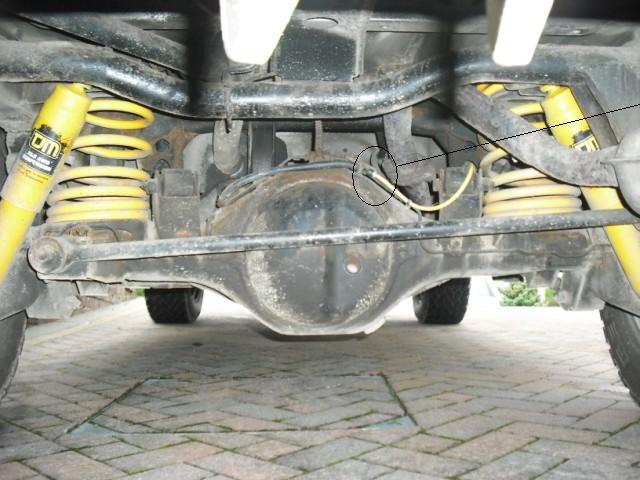Axle, transmission & transfer case breathers. Some people do use them others do not. I think they are necessary and a good way to protect key parts of your vehicle.
Simply put, rubber or polyurethane based tubing of 6-12mm diameter that connects to various parts of the vehicle that needs either a constant or intermittent air supply. Mainly for wading deep water.
All vehicles are released with factory statistics and somewhere on the specification sheet it will state a vehicles wading depth. The depths can vary from 300mm-900mm. Axles, differentials, gearboxes and even some fuel tanks come with small rubber breather pips. You can usually locate these on your vehicle near the diff's next to the brake lines. If you connect a breather extension in to the component or part and mount a junction box in the engine bay you can effectively increase your safe vehicle wading depth.
If water gets in to your diff's or transmission water and oil can make things go wrong in there. These breather pipes can greatly prevent this from happening.
When driving on or off road, your axles transmissions and other vehicle parts & components produce heat, when you enter water or mud the temperature difference alters the air pressure in the parts. If the water or watery mud is deep enough this is when your vehicle diff's and transmission are likely to get water in them. Breather pipes are capable of preventing this if placed in the engine bay or higher running up the snorkel.
A friend of mine had a 4x4 that he got stuck in a typical watery mud hole. The vehicle bottomed out and he had no way of recovering the vehicle. As it sit there in the water up to the doors over the weekend awaiting recovery slowly water was getting in to all the places you don't want water. Long story short, he needed full diff service's and his auto box draining and re-filling with oil.
Below are some pictures. The Pipe breathers, a junction box and the junction box tube running up the side in to the snorkel head.

&

&

Jason


 Wed Jan 25, 2012 9:11 am
Wed Jan 25, 2012 9:11 am



